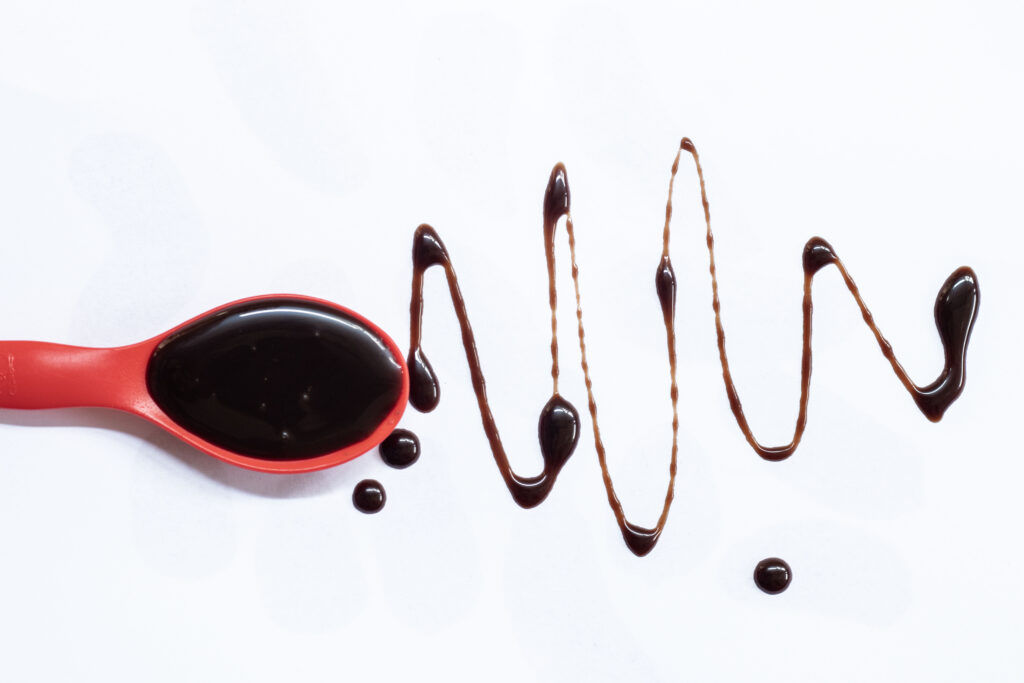
Red Wine Reduction: A Luxurious Sauce for Elegant Dishes
A Red Wine Reduction is a flavourful and aromatic sauce made by simmering red wine with aromatics, herbs, and stock until it thickens and intensifies. This rich sauce enhances poultry, seafood, vegetables, and plant-based dishes. Here's a comprehensive guide to its recipe, uses, storage, and tips.
Ingrediants
- 1 cup red wine (dry varieties like Merlot, Cabernet Sauvignon, or Pinot Noir)
- ½ cup vegetable or chicken stock
- 1 shallot, finely chopped
- 2 garlic cloves, minced
- 1 tablespoon olive oil or unsalted butter
- 1 sprig of fresh thyme (or ½ teaspoon dried thyme)
- 1 bay leaf
- 1 tablespoon balsamic vinegar (optional for acidity)
- 1 teaspoon sugar (optional, to balance acidity)
- Salt and freshly ground black pepper to taste
Instructions:
- Prepare Aromatics:
- Finely chop the shallot and mince the garlic.
- Sauté Aromatics:
- Heat olive oil or butter in a medium saucepan over medium heat.
- Add the shallot and garlic, sautéing until softened and fragrant (2–3 minutes).
- Add Wine and Stock:
- Pour in the red wine, stirring to deglaze the pan. Add the stock, thyme, and bay leaf.
- Simmer to Reduce:
- Bring the mixture to a gentle simmer and cook uncovered for 15–20 minutes, stirring occasionally, until reduced by half or to the desired consistency.
- Enhance Flavour:
- Stir in balsamic vinegar and sugar if desired. Season with salt and pepper to taste.
- Strain (Optional):
- For a smooth sauce, strain through a fine mesh sieve before serving.
Uses of Red Wine Reduction
Red wine reduction adds depth and elegance to a variety of dishes:
Poultry
- Roasted or Grilled Chicken: Drizzle over chicken breasts, thighs, or drumsticks for a refined touch.
- Turkey Cutlets: Pair with turkey for a special occasion meal.
Seafood
- Salmon: A perfect pairing for pan-seared or baked salmon.
- Shrimp or Scallops: Drizzle over sautéed or grilled seafood for a gourmet finish.
Vegetables
- Roasted Vegetables: Use as a glaze for roasted carrots, parsnips, or Brussels sprouts.
- Mushrooms: Enhance sautéed or grilled mushrooms with the sauce.
Plant-Based Dishes
- Grilled Tofu or Tempeh: Brush on as a glaze or drizzle over for extra flavour.
- Lentil or Vegetable Loaf: Serve as a topping for hearty plant-based mains.
Pasta and Grains
- Toss with plain pasta or drizzle over risotto for a luxurious upgrade.
Tips for Perfect Red Wine Reduction
- Choose the Right Wine:
- Use a wine you enjoy drinking; avoid overly sweet or very tannic wines.
- Simmer:
- A gentle simmer allows the flavours to develop and prevents bitterness.
- Balance the Acidity:
- Add a touch of sugar or butter to smooth the flavours if the sauce is too sharp.
- Strain for Smoothness:
- Strain the sauce for a silky, restaurant-quality finish.
- Adjust Consistency:
- Reduce the sauce further for a thicker consistency or add a splash of stock for a thinner one.
Storage and Shelf Life
Refrigeration
- Cool completely before transferring to an airtight container. Store in the refrigerator for up to 3–4 days.
Freezing
- Freeze in portion-sized containers or ice cube trays for up to 3 months.
- Thaw overnight in the refrigerator and reheat gently before serving.
Common Variations
- Herbed Red Wine Reduction:
- Add fresh rosemary, sage, or tarragon for a fragrant twist.
- Spiced Red Wine Reduction:
- Infuse with warm spices like cinnamon, star anise, or cloves for a festive flavour.
- Fruit-Enhanced Reduction:
- Stir in berries (such as blackberries or cherries) during the simmering process for a sweet and tangy finish.
- Lemon-Infused Reduction:
- Add a splash of lemon juice or zest for brightness.
- Creamy Red Wine Sauce:
- Stir in a few tablespoons of cream at the end for a richer, velvety texture.
Why Red Wine Reduction is Essential
This sauce is a culinary staple because it elevates simple ingredients into elegant meals. Its bold, concentrated flavours make it ideal for poultry, seafood, vegetables, and plant-based dishes, offering versatility and sophistication.
What’s Your Favourite Way to Use Red Wine Reduction?
Let me know if you want additional recipes or creative ideas for pairing this sauce!

